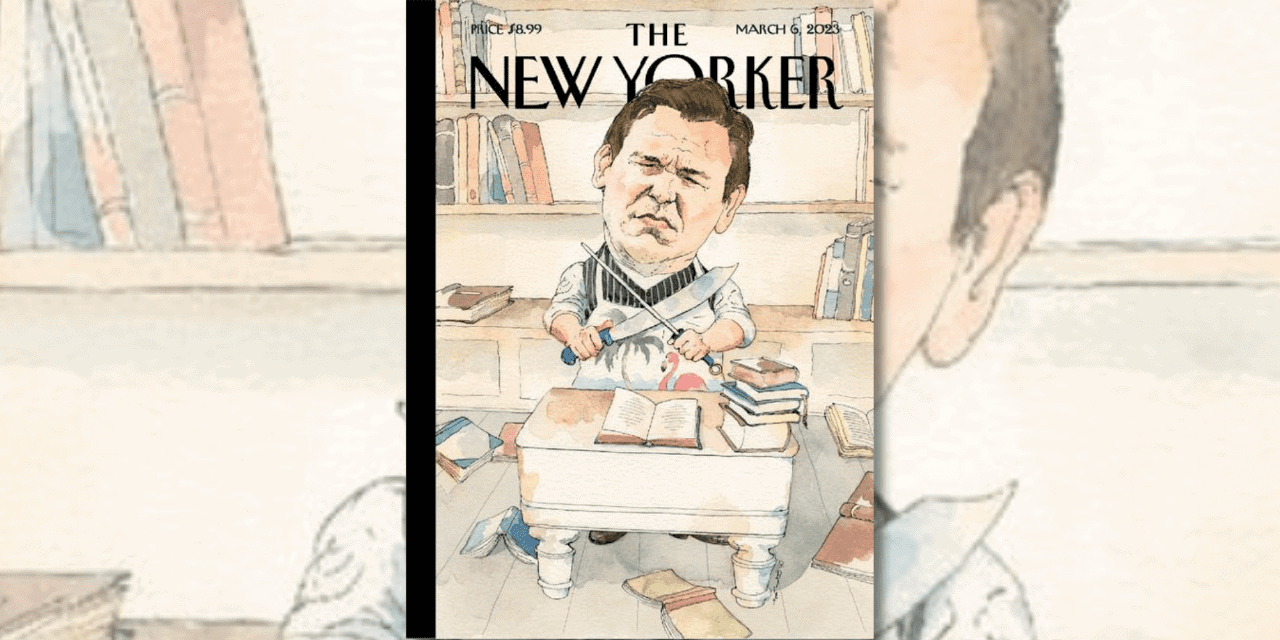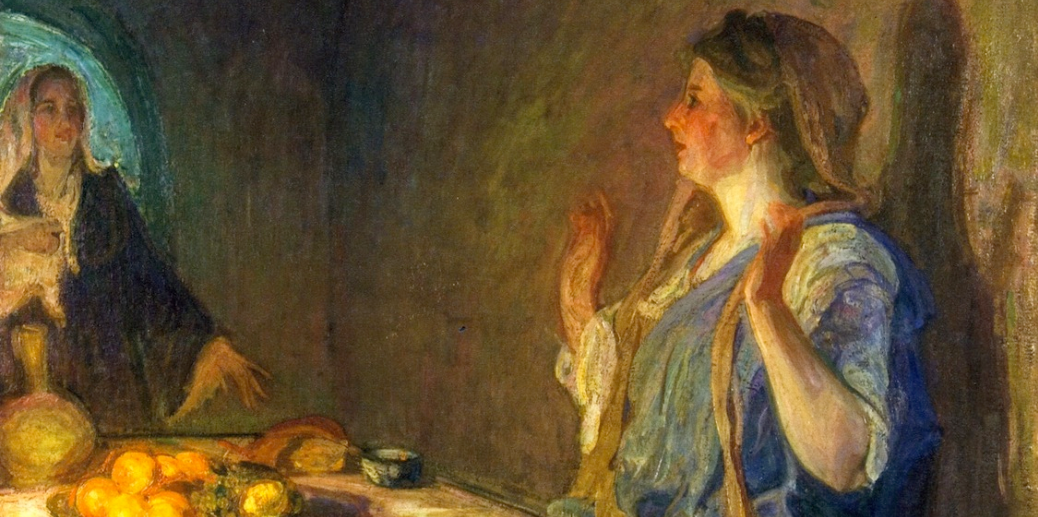The New Yorker Tags Christianity as Demeaning to Women, Their Example is Exactly Wrong

The urbane New Yorker carried a recent review of a book on how men are falling behind women in important life achievements. But in the first sentences, the author curiously cites God’s creation of Adam and Eve and Michelangelo’s Sistine Chapel as a device intended to demonstrate how Christianity takes a low view of women.
Except the evidence used shows just the opposite, and dramatically so.
The New Yorker explains in its opening sentence, “First, there was Adam, whose creation takes center stage on the ceiling of the Sistine Chapel.” The second sentence asserts, “Then, fashioned out of Adam’s spare rib, there was Eve, relegated to a smaller panel.” You get the message: Man is central, and woman orbits around him.
Yes, the old, tired patriarchy.
The magazine then goes onto to explain how men – those writing bibles and painting grand ceilings – “tell stories about men, related by men to other men” and the “notion of female equality, is historically, an innovation.” Men control the narrative and women are given subordinate standing. We know this narrative all too well because elite sources constantly tell us so.
But while The New Yorker is reportedly serious about fact checking, they got this one precisely wrong on two important levels. God’s biblical creation story, and the Sistine Chapel, which so beautifully illustrates it, actually tell a dramatically pro-woman story that is matchless.
First, the magazine is mistaken about the placement of the two scenes referenced from the Vatican’s Sistine Chapel ceiling. The famed Creation of Adam fresco is not “center stage” in Michelangelo’s masterpiece ceiling, as the article says. This, of course, is because the creation of Adam is not the culmination of God’s creation as the biblical narrative clearly tells it. That famous fresco, with God’s hand nearly touching Adam’s, is positioned next to the central image, as its lead up.
That central image?
It is the fresco the article mistakenly said was “relegated to” a lower place: The Creation of Eve. Yes, that is correct. It is she who holds center stage, the height and center, on that great ceiling.
You can see for yourself right here in this image from Wikipedia.

This detailed overlay chart confirms the fact.

Woman is given center stage. Was Michelangelo playing a trick on the men who run the “patriarchal” Vatican, reminding them that women really do matter?
Not at all.
The great artist was simply illustrating the biblical theology of creation of Christianity which The New Yorker and so many others who are critical of this faith regularly fail to get. But Christians know it, and it is that she is the glorious crown, the divinely orchestrated crescendo, of God’s stunning creation.
She is not subordinate or “relegated” to anything. And Christianity is certainly not a story with a low view of women. The precise opposite is true.
And this leads us right to the second level which the magazine got wrong.
Christian theology of creation actually celebrates the feminine more powerfully and profoundly than any other belief system, feminist or otherwise. And we know this from simply reading the biblical creation narrative and viewing the Sistine Chapel as Michelangelo intended it.
Let us first look at the biblical narrative itself, which Michelangelo illustrated so vividly.
In Genesis 1:26, Father, Son and Holy Spirit say, “Let us make [mankind] in our image, after our likeness.”
No other part of God’s incredible and breathtaking creation is made in His image and likeness. Only what God is preparing to create here will have that honor.
What is it? The next verse tells us,
So God created man in his own image,
in the image of God he created him;
male and female he created them.
Male and female, and only male and female, are the image and likeness of God in the created world. Both of them. They both do this in their sex-based uniqueness. And they do it equally, one no more or less than the other.
Quite simply, there is no greater statement about woman in all of feminist literature than to say she uniquely is the image and likeness of the God of all creation. And it is the Judeo-Christian scriptures that declare this because it is God who says it.
But she is unique, in contrast to Adam, because she is the capstone of God’s creation. And she is the answer the fundamental, existential human problem that God declares in Genesis 2:18.
And that is precisely why Michelangelo places her at the center of his grand visual story. And he actually illustrates her importance in both panels, The Creation of Adam and The Creation of Eve.
How he does this is important.
While God and Adam’s fingers are the famous focus in The Creation of Adam, this is not the only action. Michelangelo highlights someone else alongside Adam in a very important and dramatic way. There she is, tucked tenderly right under God’s left arm.
And she is indeed so intimately comfortable with God, the Father and creator of all that is, that she has her hand wrapped easily around His arm. It is indication of great familiarity.

But who is she?
That is the question noted art historian Elizabeth Lev asks in her authoritative TED talk on the Sistine Chapel. “Who is in [God’s] other arm?” She answers as confidentially as she asks it, “Eve, the first woman.”
Lev then quickly proclaims Eve’s matchless significance in this famous fresco. “No, she’s not an afterthought. She’s part of the plan. She’s always been in His mind.”
Eve is the essential completion, the divine capstone, to all that God has created and declared “very good.” You will not find a greater pro-woman statement in all of feminist literature. But there it is, both in scripture and Christianity’s majestic Sistine Chapel.
Lev expresses this herself as an observer of Michelangelo’s glorious work and message.
And for me, an American art historian from the 21st Century, this was the moment that the painting spoke to me. Because I realized that this representation of the human drama was always about men and women. So much so, that the dead center, at the heart of the ceiling, is the creation of woman, not Adam.
This is the Christian creation story, and it is unmistakably about the profound and equal significance of both male and female. It is certainly not one of superiority and subjugation, regality for him and relegation for her.
Any such reading, as The New Yorker offered, is wholly false.
This is what scripture clearly teaches about who woman is and that great, famous Vatican ceiling proclaims it to anyone who takes the time to simply observe what is there.
ABOUT THE AUTHOR

Glenn is the director of Global Family Formation Studies at Focus on the Family and debates and lectures extensively on the issues of gender, sexuality, marriage and parenting at universities and churches around the world. His latest books are "The Myth of the Dying Church" and “Loving My (LGBT) Neighbor: Being Friends in Grace and Truth." He is also a senior contributor for The Federalist.
Related Posts

Parents Should Dread Netflix’s Purchase of Warner Brothers
December 11, 2025

Nick Fuentes’ Feminism for Men
December 11, 2025

Correcting the White House: God Became Man at Conception, Not Birth
December 10, 2025

To Save America, Have Lots of Children
December 10, 2025
